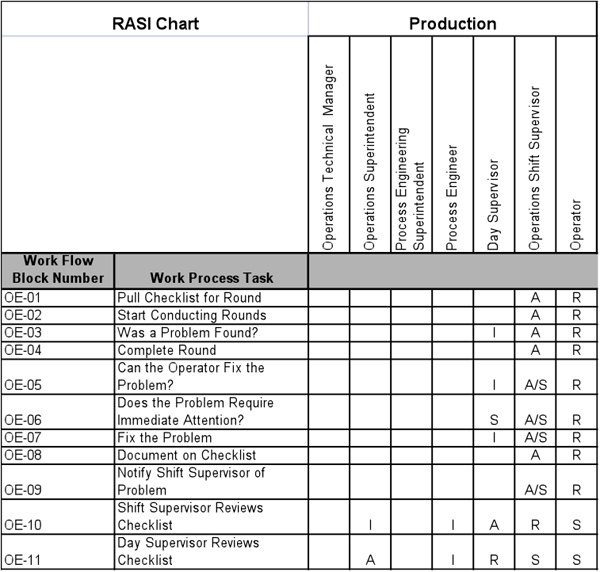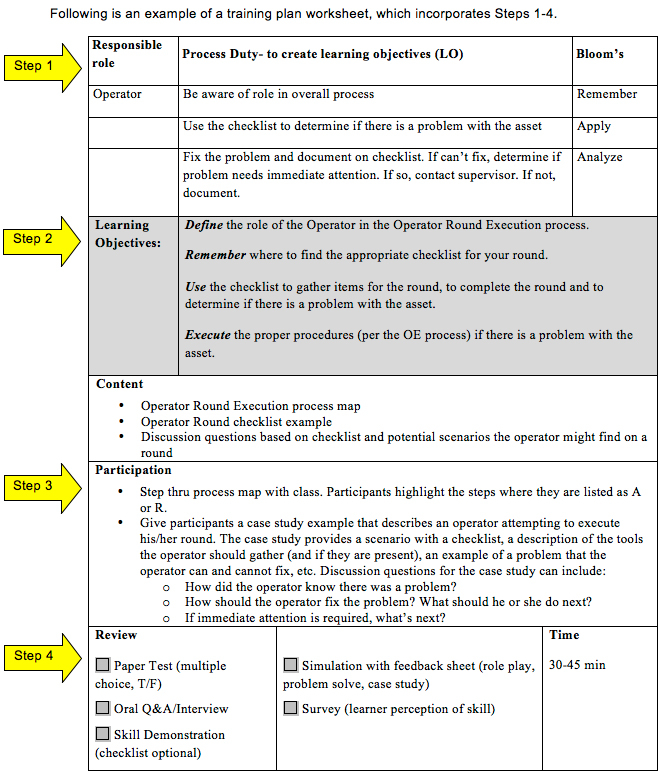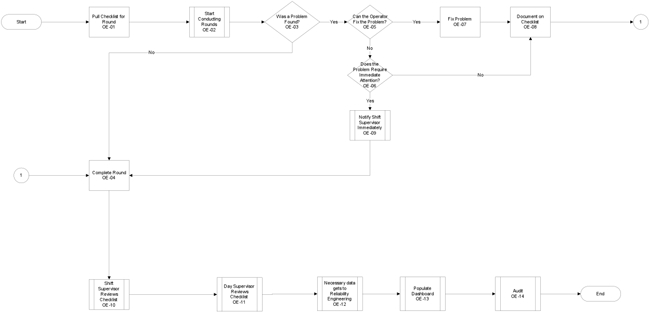Training Speeds Continuous Improvement
By Joe Mikes and Tara Denton of Life Cycle Engineering
One way an organization tries to stay competitive is by introducing an initiative targeted at improving performance. Improvement initiatives can be large or small in scope; however, the nature of change ultimately leads to a realization: change is here, and people on the front lines are the ones making that change. The path from current state to desired state is usually accomplished by some form of training the employees. Regardless of the type of improvement (software upgrade, process change, organizational restructure, etc.) the approach explained below can help make sure everyone reaches the desired state.
Skipping or shortening the process increases the risk of a poorly executed change. Although challenging, the technical side of the improvement initiative can be the easy part, primarily because we have control over this. The people side or change management aspect is the hard part. Helping people through the change and sustaining the change should include a structured change management process, including a well-planned training approach.
Life Cycle Engineering (LCE) helps clients transition from current state to the final desired state by consistently applying best practices in training. Our approach includes:
- Summarizing the technical process changes, based on role responsibility
- Developing learning objectives (active, specific, measurable)
- Creating training plans based on those learning objectives which are focused and meaningful
- Providing follow-up coaching after training and program evaluation
Effective training takes more effort than tossing a slide presentation together and talking at the employees. Considering the cost of a failed or slowed change, the effort is well worth it. Let’s take a closer look at each element as they relate to training employees for an organizational change or newly defined business process.
Step1: Summarize process changes
From business process documents, including flow charts and responsibilities matrices (see Figures 1, 2 and 3 below), summarize the process duties. Process duties are tasks an employee must carry out to perform the process, and may encompass several process steps. In the training worksheet, these are labeled “process duties” (Figure 3).
Figure 1: Process flow (Click to Enlarge)

R= Responsible A= Accountable S= Support I= Inform
Figure 2: Responsibility matrix
Step 2: Develop learning objectives
Learning objectives detail the behavior change that is expected after the training. They should be specific and measurable, so it is clear if the learning achieved the desired knowledge and skills.
Techniques to develop strong learning objectives include ABCD (audience, behavior, condition, degree) and SMART (specific, measurable, attainable, relevant and timely). To ensure measurable learning objectives and guide instructional strategy, the Life Cycle Institute (LCE’s education group) uses Bloom’s Taxonomy. Bloom’s Taxonomy is a model that categorizes the different levels of cognitive thinking and uses corresponding verbs to clearly define the types of instructional strategies and evaluation necessary to reach a certain level of learning. The Bloom’s categories include: Remembering, Understanding, Applying, Analyzing, Evaluating and Creating, and move from simple to more complex levels of cognitive thinking as the pyramid narrows.
Step 3: Create a training plan
Active, adult learning requires multiple elements to be effective. The Life Cycle Institute focuses on four major principles of learning to guide training plan development:
- Experience: does the training take into account the prior knowledge and experience the learner brings into the class?
- Active: is the learner working with the content, interacting with others to enhance learning?
- Relevant: is the content applicable to the learner’s everyday work and life?
- Self-directed: does the participant make choices about how they’re learning and reflecting on that learning, versus being a passive accepter of information?
Step 4: Follow up and evaluation
Follow-up and evaluation are necessary to understand how learners use the new knowledge and skills on the job and define the benefits the new behaviors can bring to the organization.
A coaching card system is one method especially effective for new process follow-up. These cards contain questions related to the training learning objectives that can be answered by individuals practicing in the field. The results of the coaching card interviews will reveal how well the desired state is being adopted and identify specific areas that need more attention.

Figure 3: Training Plan Worksheet
To better illustrate how the four steps can be put into action, meet Janet in the case study below. Janet’s story is not unlike other veterans of a business change. Her story illustrates the important role training plays in applying and sustaining new processes and behaviors after a change has been implemented.
Case Study: Janet’s Experience
As Janet pulled into the office parking lot after a long holiday weekend, she remembered she had three hours of training to attend. She wanted to crawl under a rock and avoid the dreaded training. Unfortunately, training credits aren’t given to those hiding under a rock. As Janet considered what her day had in store, she recalled how many things have changed since she was hired:
Janet has been with the company seven years. In that time, she has experienced big changes at the company, namely a new CEO and two new software systems that were supposed to help them with their jobs. For the first system change, the software vendor provided some training to go with the system “improvements,” but when the functional training was over, the employees were left to their own devices to make the new system work with their current processes. Nine months later, pieces of the old system are still used to make sure the information and reports are correct and the new CEO gets quality data. As Janet saw it, the problems started quite early.
Today’s training marks the start of the second software system change. Dreading the training, Janet enters the classroom thinking of the lack of follow-through she experienced after her last training. However, this time, the organization takes a training approach based on how people learn by defining clear objectives the training should reach, which are aligned with how learners are supposed to perform on the job. This time Janet is told why she is in class with a few simple objectives to learn. The time estimates per section are listed and there are no sections over 30 minutes.
The trainers illustrate to her how her work fits in with other people’s jobs. For Janet, this part of the program provided the big picture of how everyone’s work is linked together before the specific details of her job were covered. The class discusses how the job will be done and what will change. Ten minutes into the session, Janet was beginning to practice her role. As soon as she is comfortable with the first role, the class moves to the next task, continuing until Janet is introduced to all of the changes her job will encounter.
Learning point:
Analysis and Planned Training Approach
A business change includes an analysis of what needs to change in order for the initiative to be successful. Effective training also begins with a “needs analysis.” If the business change is related to new process development with role accountability (normally captured in a RASI or RACI tool, exampled in Figure 2), a large part of the needs analysis is complete.
From the role responsibility, specific learning objectives are created so that the training is focused on information critical to the learner. Objectives are necessary to deliver training at the right level of learning so that the individual can perform at the levels expected, and to determine the validity of the training through evaluation.
Let’s return to Janet’s story for the outcome.
Coaching and Follow-through for Sustainment
Before she knew it, the three hours of training were over and Janet was clear on what she needed to do. The class materials included job aids to help Janet remember the steps of her tasks. Before leaving the class, the facilitators discussed a coaching process that would begin immediately. During the coaching process, coaches would visit Janet’s work area daily, then weekly, then monthly, until the coaching was no longer needed. The facilitators told Janet and the other learners that the coach’s purpose is to provide added support and to ask how they can help her perform the job tasks or improve the job. Janet received a copy of a list of questions the coaches would ask in advance, so she knows what to expect.
Janet walked out of the training session energized. She had been given a lot to process, but it wasn’t overwhelming because she practiced scenarios in training that were true to her daily duties. She was especially happy to have the coaching group listen to her and resolve issues for the next few weeks.
Learning point:
Evaluation
Effective training should be evaluated to determine if the training was effective and if it provides results to the organization. In Janet’s story, the coaches observe the learners in their work environment and have a list of questions to ensure the new behaviors are being practiced, as defined by the learning objectives. As an added method to support following through on her new behaviors, Janet also receives job aids that can enhance her performance.
Now, 10 weeks after the training, Janet and her colleagues are pleased with how things are going. There is commitment from management to fix problems along the way. Overall, the committee has resolved about 250 issues (big and small)! The big difference this time was the well-planned training, real life examples with practice in the classroom, and the follow-up coaching plan. Everyone has settled into their new roles faster than when changes occurred in the past. This time there is no going back to the old way.
Summary
In this article, we discussed an approach to move from training as an afterthought, to treating it as the primary method to build a sustainable, viral method to penetrate the organization and promote ownership of new business improvements, processes and behaviors.
For more information on how we can help you analyze, design, develop, implement and evaluate your training efforts, please email education@LCE.com.
© Life Cycle Engineering

For More Information
843.744.7110 | info@LCE.com

